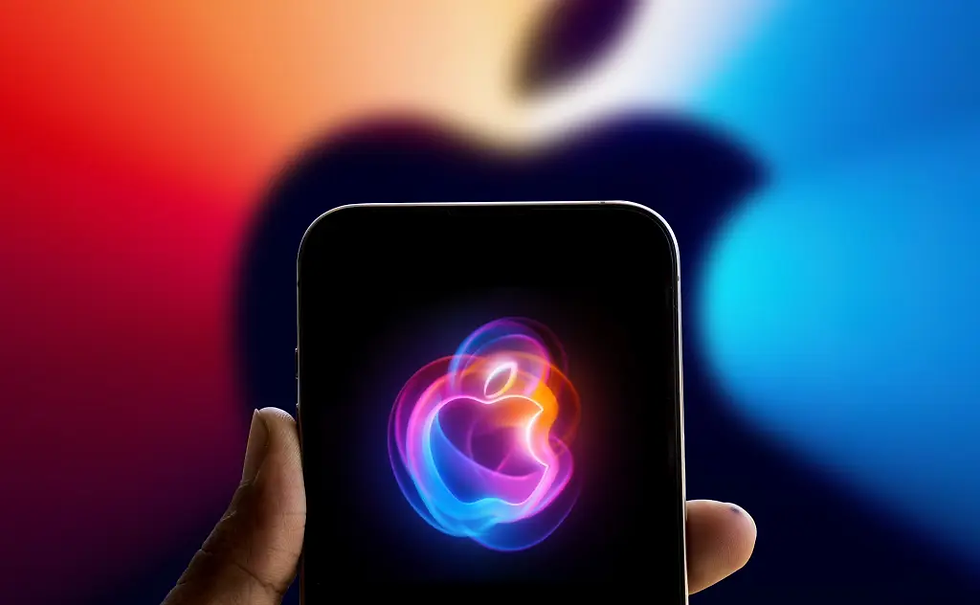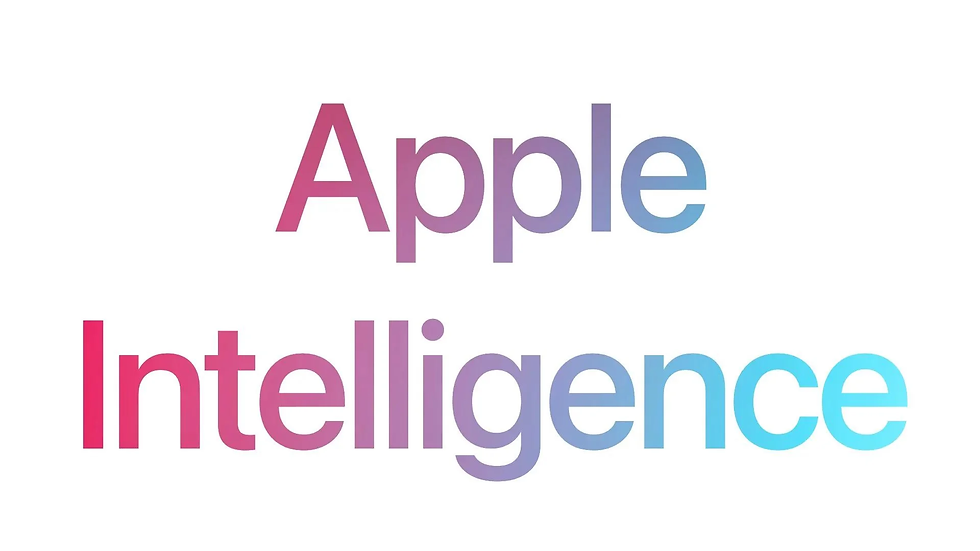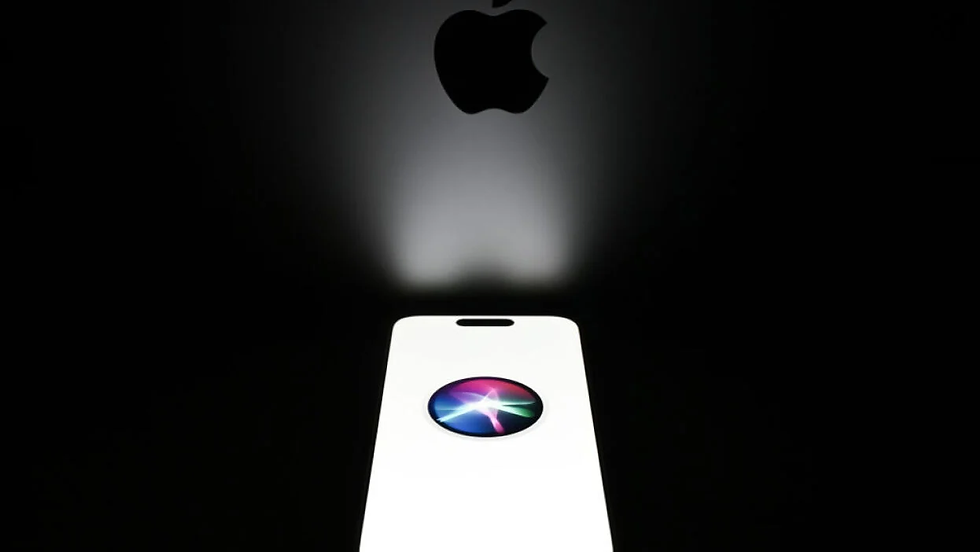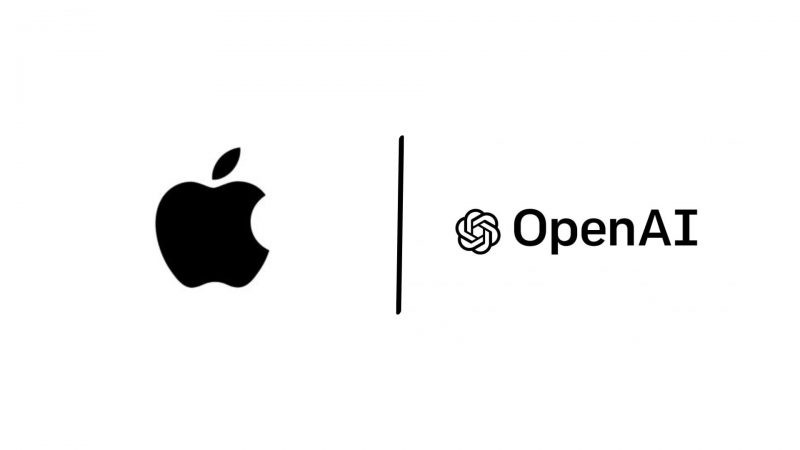Apple’s AI Siri Overhaul Delayed to Spring 2026: What Went Wrong?
- Olivia Johnson

- Aug 15
- 10 min read

Apple has officially announced that its much-anticipated AI Siri overhaul will be delayed until Spring 2026, pushing back the timeline for a major upgrade to its voice assistant. This delay is significant not just for Apple users but for the broader tech ecosystem. Siri’s transformation promised more personalized, intuitive, and intelligent interactions, including advanced voice control of iPhone apps, improved natural language understanding, and tighter privacy protections. The postponement means users will have to wait longer for these cutting-edge capabilities, while competitors continue to accelerate their AI offerings.
The company cited the need for further refinement around security, reliability, and user trust as core reasons behind the Siri AI overhaul delay, emphasizing a cautious approach given the complexity of integrating AI in voice assistants. However, this setback also raises broader implications: Apple’s competitive edge in voice AI is at risk; regulatory scrutiny around privacy and explainability remains intense; and consumer expectations continue to evolve rapidly.
This article delves into the details of Apple’s official announcement, explores the technical challenges that complicated the rollout, examines the competitive and market impact, considers the regulatory and legal implications, outlines potential consumer use cases, and analyzes the public and developer response. Finally, it draws lessons from this delay as a case study in balancing innovation with safety, transparency, and compliance.
What Apple Officially Announced About the Siri AI Overhaul

On March 7, 2025, Apple confirmed that the comprehensive overhaul of its voice assistant, Siri, originally expected sooner, is now postponed to Spring 2026. In its official statement, Apple underscored the need for additional time to “refine the technology, strengthen security measures, and ensure reliability” before delivering this next-generation experience to users. The announcement can be found in the Apple newsroom, which highlights a commitment to quality over speed in deploying AI-driven features.
This Siri AI overhaul aims to infuse Siri with more advanced artificial intelligence capabilities—enabling personalized responses, deeper context understanding, and seamless interaction with third-party apps through voice commands. However, Apple clarified that some incremental improvements will still roll out in upcoming iOS updates, but the full suite of AI-powered features—including extensive app voice control and enhanced personalization—will debut only after this delay.
The planned overhaul targets a wide range of Apple platforms: iPhones, iPads, Macs, and HomePods. Apple's vision is to deliver an assistant that not only understands nuanced requests but respects user privacy by performing much AI processing on-device rather than relying solely on cloud computation.
Timeline and Scope — What “Spring 2026” Likely Means
The timing aligns closely with Apple’s annual Worldwide Developers Conference (WWDC), traditionally held in June. This event often serves as a platform for announcing major software upgrades ahead of fall device launches. The "Spring 2026" timeframe suggests that developers and users can expect previews or betas around WWDC 2026, with a wider public release possibly coinciding with iOS 20 or macOS 14 updates.
Trade press coverage such as Bloomberg’s reporting notes that Spring 2026 gives Apple roughly a year and a half from the original expected launch window to address architectural challenges and enhance the foundational AI models powering Siri. This timeline also accommodates cross-team coordination between privacy engineering, OS development, and developer API readiness.
Official Rationale Versus Reporting — Apple's Public Message vs. Outside Analysis
Apple’s public messaging frames the delay as a thoughtful decision prioritizing user trust through improved safety and reliability. This is consistent with Apple’s longstanding emphasis on privacy and security as cornerstones of its AI strategy.
External analysts and media outlets, as reported by CNBC, have speculated that the delay also reflects deeper technical hurdles and possible internal misalignment about the scope of the overhaul. It’s common for companies facing complex AI deployments to frame delays positively as quality choices while managing market expectations.
Companies often highlight safety and quality to maintain consumer confidence and pre-empt regulatory scrutiny, even when delays stem from technical or organizational difficulties.
Technical Challenges Behind the Siri AI Overhaul Delay

Apple’s ambitious plan to revamp Siri into an AI-powered personalized assistant encountered formidable technical challenges that contributed heavily to the postponement. Unlike text-based models that process static inputs, voice assistants face unique complexities related to real-time interaction, contextual understanding, and security.
Preventing Voice-Based AI Attacks — The Security Challenge
Voice assistants are vulnerable to various sophisticated attacks such as voice spoofing, where attackers mimic a user’s voice to gain unauthorized access; adversarial audio, where subtle signal manipulations cause misinterpretation; and even replay attacks using recorded phrases. Research highlighted in an arXiv paper on security vulnerabilities in AI-driven voice systems reveals how attackers exploit these vectors to bypass authentication or trick systems into performing unintended actions.
For Apple’s Siri, which controls sensitive functions like payments and smart home devices, guarding against these threats is critical. Implementing defenses such as:
Multi-factor verification: Combining voice recognition with device biometrics or passcodes.
Acoustic fingerprinting: Identifying unique audio characteristics beyond speech content.
Anomaly detection algorithms: Flagging unusual interaction patterns in real-time.
These methods come with trade-offs: increased latency, user friction, or false positives that degrade user experience. Balancing security without compromising convenience is a core challenge that delayed release readiness.
Making Siri Explainable and Trustworthy — Explainable AI Hurdles
Explainable AI refers to designing models whose decisions can be understood by humans—a vital attribute for building trust in systems that interact conversationally with users. For voice assistants like Siri, explainability is not just a luxury but increasingly a regulatory expectation.
However, explainability techniques developed for text or image models don’t directly translate to real-time speech interactions. Conversational models generate responses based on complex context windows and probabilistic reasoning that are hard to unpack clearly for end users.
According to research on explainable AI, developing transparent explanations requires extensive validation to ensure reliability and avoid confusing users with oversimplified or misleading rationales. Apple needs time to design interfaces that present understandable feedback while preserving privacy and avoiding information overload—an intricate engineering task contributing to delays.
Model Integration, On-Device vs Cloud Tradeoffs, and Feature Complexity
Apple’s architecture prioritizes on-device processing to minimize data sent to clouds for privacy reasons. While this approach aligns with Apple’s ethos, it imposes constraints on computational power and model size compared to cloud-based models used by some competitors.
Integrating advanced AI models into Siri also involves deep hooks into iOS frameworks and third-party apps. Enabling voice control of iPhone apps requires new developer APIs and robust quality assurance testing across thousands of app variations to prevent crashes or unintended behavior.
As reported by MacRumors in their technical analysis, this increased complexity means longer development cycles:
Ensuring low latency voice interactions despite heavier on-device AI.
Managing API access permissions securely.
Extensive cross-team testing across OS versions and hardware models.
Internal Development Issues and Coordination (Engineering & Product Challenges)
Behind the scenes, reports from investigative sources such as The Information reveal organizational friction slowed progress. Coordinating teams responsible for privacy safeguards, OS development, cloud infrastructure, and developer relations proved challenging.
Prioritization conflicts arose between competing goals: advancing new features rapidly versus maintaining the stringent security posture Apple insists upon. Cross-team dependencies created bottlenecks where delays in one area cascaded into others.
Large-scale AI projects often face such coordination challenges requiring strong leadership alignment and clear roadmaps—lessons Apple will likely apply looking forward.
Competitive and Market Impact of the Siri AI Overhaul Delay

The postponement of Apple’s Siri overhaul has ripple effects across the tech industry landscape, particularly in the fierce competition around voice assistants and AI experiences.
Rivals' Playbooks — How Competitors Are Responding
Google wasted no time capitalizing on Apple's setback. A recent Pixel 10 advertisement humorously targeted Apple’s delay as a strategic misstep in the ongoing AI arms race. Google’s Assistant continues rolling out new generative AI features rapidly, leveraging its cloud infrastructure strength.
Meta and Amazon are also accelerating investments in multimodal assistants and smart home integration. These rivals aim to seize mindshare by promoting advanced capabilities like real-time transcription, contextual follow-up queries, and broader ecosystem control.
Market Perception and Investor Considerations
Analysts following Apple expressed mixed reactions after the announcement. While some praised Apple’s prudence in emphasizing safety over haste, others voiced concerns about potential erosion of Apple’s reputation for innovation leadership amid aggressive moves by competitors.
Delays can impact enterprise developer confidence too. Businesses evaluating voice assistant capabilities for integration may hesitate pending clearer timelines or comprehensive API availability.
Feature Race — What Competitors Must Achieve to Match Apple’s Planned Capabilities
Apple’s planned features include comprehensive voice control of iPhone apps—a significant leap beyond simple assistant queries—offering hands-free operation across messaging, navigation, productivity tools, and more.
Competitors face substantial technical barriers replicating this level of OS-level integration while maintaining privacy safeguards. Google’s Android ecosystem is more fragmented, complicating uniform app control via voice. Apple’s tightly controlled ecosystem provides a comparative advantage once features are delivered.
Regulatory, Policy and Legal Implications of the Delay

Beyond technical issues, regulatory pressures around privacy, transparency, and consumer protection heavily influenced Apple's timeline on the Siri AI overhaul.
Recent developments in data protection laws worldwide increasingly require explainability, data minimization, and auditability for AI systems processing personal information. Bloomberg coverage highlights how these factors have led Apple to take a cautious stance in releasing new AI features until compliance is assured.
Privacy, Transparency, and Explainability Requirements
Regulators now demand mechanisms allowing users to understand how AI assistants make decisions—especially when those decisions affect sensitive data or financial transactions. Explainability tools must be robust enough for audits but user-friendly enough for everyday consumers.
Meeting these regulatory expectations necessitates additional development time for testing new interfaces that disclose data usage clearly without overwhelming users—a key factor slowing deployment.
Potential Legal Exposure and Consumer Protection Risks
AI assistants pose legal risks if they provide inaccurate information causing harm or perform unauthorized actions like purchases or data sharing without explicit consent.
To mitigate liability exposure before launch, Apple appears committed to extended internal testing cycles plus implementing stricter access controls within Siri’s architecture—practices likely contributing to the delay but essential for long-term risk management.
Consumer Use Cases, Adoption Scenarios and Real-World Applications

Apple envisioned substantial upgrades through this Siri overhaul aimed at transforming everyday interactions through voice control and personalized assistance across devices.
Accessibility and Hands-Free Scenarios
Enhanced Siri capabilities could empower users with disabilities by enabling comprehensive hands-free control over apps like messaging, maps navigation, email composition, or media playback without manual input. For example:
A visually impaired user dictating complex texts.
A driver managing playlists or communication safely while on the road.https://www.remio.ai/
Quick execution of multi-step tasks through chained voice commands.
Sensitive actions such as payments or accessing health data would integrate safeguards like biometric confirmation or explicit verbal consent prompts ensuring security within these scenarios.
Developer & Ecosystem Implications
App developers must prepare for new voice-control APIs requiring thoughtful UX redesign focused on conversational flows rather than traditional touch inputs. This transition demands extensive testing for responsiveness and privacy compliance.
Apple may impose strict platform guidelines limiting how apps access voice data or respond to commands to prevent misuse or malicious exploitation—factors developers need early clarity on.
Consumer Sentiment, Media Reaction and Market Signals

The announcement sparked mixed reactions among consumers and media alike. While many appreciated Apple's caution given recent high-profile AI failures elsewhere, frustration surfaced over prolonged waits for promised capabilities.
Tech Press and Analyst Takeaways
Coverage reflected two main narratives: one praising Apple’s focus on safety amid growing regulatory scrutiny; another expressing concern about falling behind competitors who aggressively push new features at riskier paces.
Analysts warned potential short-term impacts on Apple stock momentum but remained cautiously optimistic about long-term market leadership if quality standards hold.
Social and Developer Community Reactions
Developer forums such as MacRumors showed mixed sentiment—skepticism about feasibility balanced with relief that Apple prioritizes stability over rushing incomplete features.
Meanwhile, competitors’ marketing teams seized on the delay humorously, amplifying public awareness of Apple's stumble in the AI race.
Case Study: The Siri Delay as an Industry Lesson
Apple’s delayed Siri AI overhaul offers valuable insights into managing large-scale AI product launches balancing innovation speed against critical concerns around safety, explainability, and regulatory compliance.
Key lessons include:
Prioritize robust security early: Voice assistants face unique attack vectors requiring substantial research investment before deployment.
Invest in explainability upfront: Transparent AI behavior builds long-term trust but demands specialized design efforts beyond standard model training .
Ensure cross-team coordination: Aligning engineering, product management, privacy teams avoids bottlenecks that can derail timelines (as reported by The Information).
Adopt phased rollouts: Incremental feature releases paired with external red-team testing mitigate risks while gathering real-world feedback.
Engage regulators proactively: Early dialogue helps anticipate compliance requirements reducing last-minute adjustments delaying launches.
This case underscores how even industry leaders like Apple must balance competing priorities carefully when integrating advanced AI into consumer products where trust is paramount.
Frequently Asked Questions (FAQ) about the Siri AI Overhaul Delay

Q: Why did Apple delay the Siri AI overhaul?
Apple delayed it to refine security measures, improve reliability, and ensure high-quality user experiences before releasing advanced personalized assistant features.
Q: Will existing Siri features change in the meantime?
Some incremental updates will continue rolling out via regular iOS updates; however, major new AI-driven capabilities like full app voice control won’t arrive until Spring 2026.
Q: Does the delay mean Apple is behind competitors?
While rivals are advancing quickly with cloud-centric assistants, Apple trades speed for privacy-focused design—a different approach that may pay off long-term despite short-term perception gaps.
Q: Are there security or legal reasons for the delay?
Yes; preventing voice-based attacks and meeting evolving regulatory transparency requirements are critical factors influencing timing.
Q: When should users expect the new features and what should they watch for? Look for previews at WWDC 2026 around June with wider availability later that year; watch official Apple announcements detailing developer APIs and beta programs.
Actionable Conclusions and Forward-Looking Analysis
The Siri AI overhaul delay implications underscore a complex intersection of technology readiness, competitive pressures, regulatory demands, and user trust considerations shaping modern AI product launches.
In the short term, expect competitors to leverage this gap aggressively via marketing campaigns highlighting their rapid innovation. Medium-term focus shifts toward preparing developer ecosystems for eventual voice-control APIs while navigating evolving privacy regulations.
To regain momentum, Apple should prioritize transparent communications outlining clear timelines; embrace third-party audits for security assurance; implement staged rollouts allowing incremental feature exposure; and engage actively with developers through previews and detailed documentation.
Key signals to monitor through 2025–2026 include announcements at WWDC events regarding new Siri capabilities; emerging regulatory guidelines shaping explainability standards; plus competitor feature launches revealing market direction shifts.
Ultimately, while delayed, this overhaul could redefine voice assistants’ role—moving beyond simple queries toward truly personalized digital companions embedded deeply within device ecosystems. The lessons from Apple's cautious approach may also inform safer, more trustworthy AI product-release practices industry-wide.
Apple's journey with Siri exemplifies how cutting-edge AI innovation demands patience—not just from companies but from us all—as technology evolves responsibly into everyday life.


